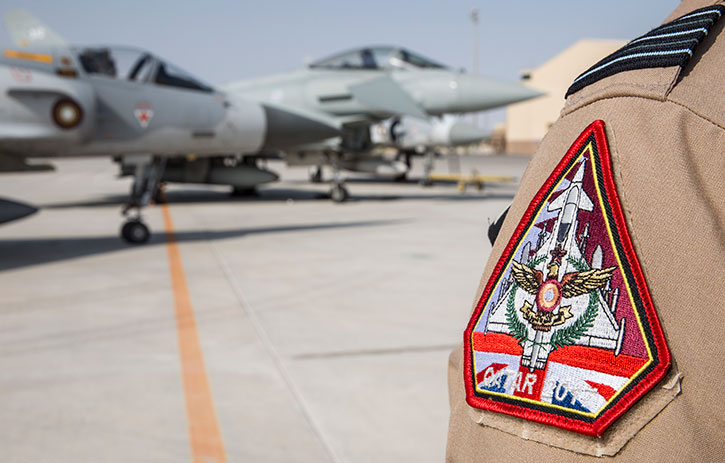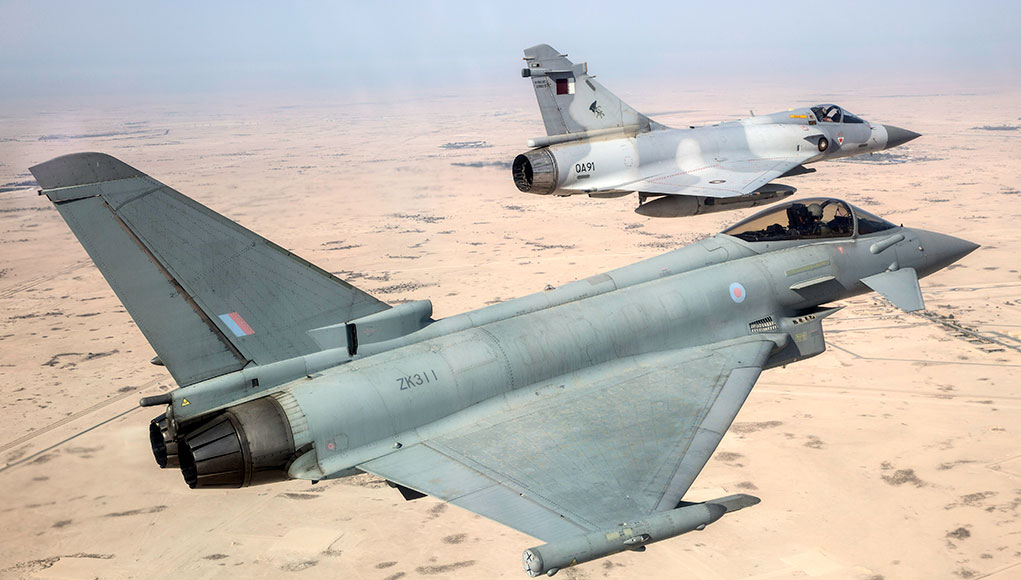
In recent months Qatar defense officials were busy signing orders and deals for 96 new fighters, in a shopping spree aimed to scale the country’s minuscule air force eightfold. When (and if) those deliveries are completed, the Qatari Emiri Air Force (QEAF) will increase its order of battle from the current nine Mirage 2000-5 fighters to 96 modern, 4.5 Generation combat jets armed with the latest weapons the Western world can offer.
Yesterday Doha confirmed the acquisition of 24 Eurofighter Typhoon combat planes in an order worth US$8 billion (£6 billion), following the previous announcement on such purchase in September. Delivery is expected to commence in late 2022 with BAE Systems acting as the prime contractor for both the provision of the aircraft and the agreed arrangements for the in-service support and initial training. Two years ago, Qatar signed a similar order for 24 Rafale fighter jets from Dassault, under a $7 billion (€6 billion) order, and last week exercised the option to buy 12 more, raising the total number to 36.
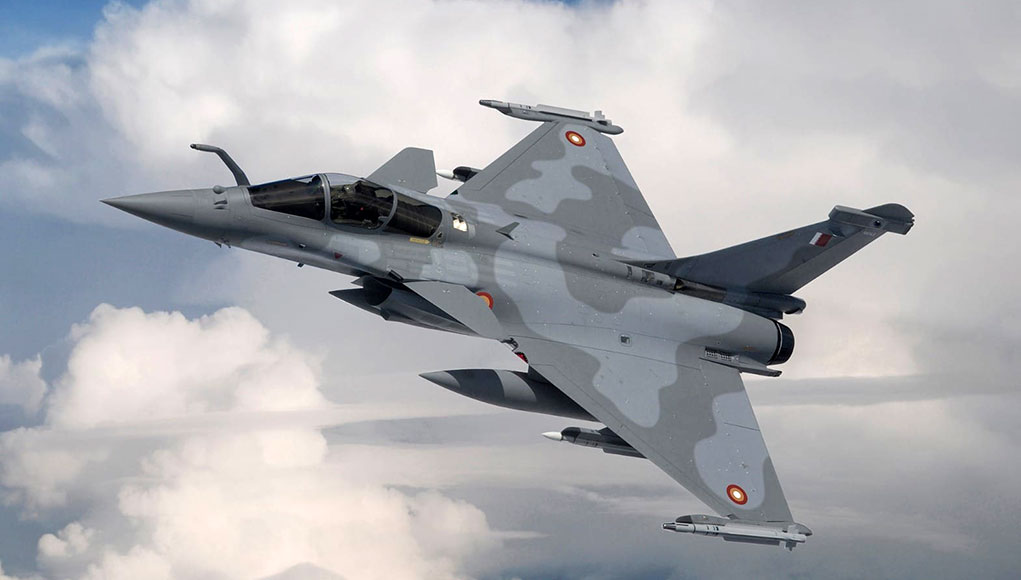
72 was the number of planes Qatar has initially been planning to buy, and the F-15 was one of several options Doha evaluated, that also included the French Rafale and European Typhoon. Lockheed Martin F-35 and F-16, Boeing F-18E/F and Saab Gripen were also assessed but not part of those shortlisted for the final pick. Since the French Rafale was already selected and firmed in order, Qatar could not pursue with full acquisition of the F-15QE. Nevertheless, as Qatar values those arms packages for their political value, it seems that splitting the border between the USA and the UK would earn Doha the expected political dividends. As London was the first to finalize a deal, a contract with Boeing for the F-15QA is now expected.
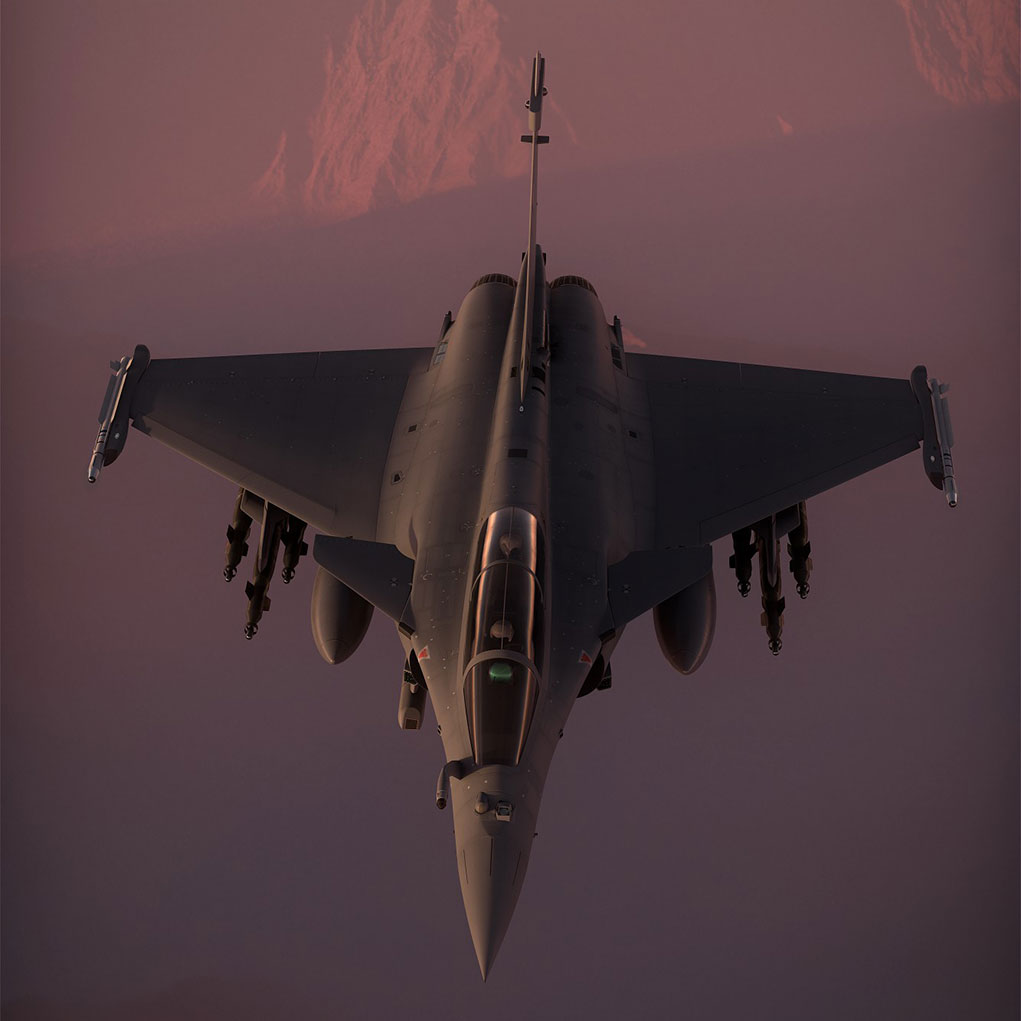
Besides the aircraft producers, weapon manufacturers will also become major beneficiaries. Raytheon and Lockheed Martin are likely to win their share if the F-15QA acquisition matures. Meanwhile, MBDA is positioned to become a significant supplier to Qatar – the recent Typhoon order also covers acquisition of Meteor Air/Air missiles (AAM) and Brimstone air/ground missiles, both produced by MBDA. It also includes Paveway IV guided bombs built by Raytheon in the UK. MBDA also benefit from the Rafale deal, providing the Meteor AAM, along with two types of MICA AAMs (radar and IR guided), SCALP cruise missiles, Exocet anti-ship missiles and Safran (Sagem DS) produced Hammer air/surface guided munitions. Meteor and SCALP are two weapons expected to extend the reach of QEAF way beyond its borders, as the Meteor offers an operational range beyond 100 km, the most extended engagement range among Western air/air missiles and SCALP providing a precision strike capability at ranges more than 250 km away.
In its move to bolster its military power Qatar take an example from Singapore, that established its military power, particularly the air force, to scale with its economic weight, rather than the size of the population or geographic scale. But, while it took Singapore decades to bring its military to airpower to its current size, oil-rich Qatar wants to do it in few years, and it has the financial resources to do that. This rapid growth is not merely a whim; the QEAF prepares for a future where allied forces might reduce their presence in Al Udeid airbase, thus leave Qatar vulnerable. Qatar currently hosts tens of thousands of airmen and hundreds of combat planes from the USA, UK, and Australia. Those countries could withdraw their forces as operations against ISIL and Taliban are ceased. The friction with neighboring countries, which erupted this summer, only added urgency to Doha’s contingency plans.
How Qatar plans to operate and maintain those planes and diversified force? Each of the deals includes support and training services for air and ground crews, both in France, the UK and in Qatar. But these services often focus on the transition of skilled operators, not training cadets. But, can money solve this complex logistical puzzle?
The Emiri’s air force currently operates only 12 training and fighter jets and do not have pilots to man the growing combat fleet. Despite the establishment of significant training operations to train new pilots (with the acquisition of a fleet of Pilatus PC-9 turboprop trainers in 2012), Qatar’s small population will not likely support such growth in the next few years. The shortage brought Qatar to outsource the services of experienced pilots, a concept practiced by many of the oil-rich countries in the region. Reliance on contractor support for maintaining combat-ready forces of each type, using weapon and avionics configurations identical to the original version (Francs and Britain) would also make it simpler to rely on such resources, rather than establish local support.
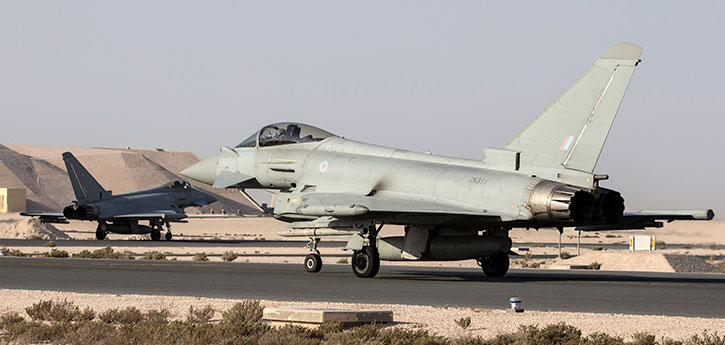
Last month Britain’s Royal Air Force (RAF) completed a training deployment to Al Udeid in Qatar, where four Typhoon fighters from No 29(R) Squadron joined the QEAF Mirage 2000-5 for a week-long exercise. Many of the QEAF pilots involved in this exercise will be amongst the first to be trained to fly them in Great Britain.
This cooperation will increase shortly, under the agreement signed between the two countries to establish a Joint Operation Squadron (JOS); this unique formation provides the nucleus of future joint operations between the Qatar Emiri Air Force and the RAF. Initially, the JOS will rely on RAF No. 12 Squadron. The squadron is currently operating Tornados and soon will transition to the future Typhoon force. The joint operation will bring Qatari air and support crews to train with their British colleagues at RAF Coningsby, Lincolnshire UK. As the JOS assumes combat readiness, with the goal to enhance the Qatari Air Force to provide aerial security over the peninsula during the FIFA 2022 World Cup events. “The Qataris will not be a permanent part of the squadron but will be integrated ahead of the delivery of the Typhoon aircraft. The move will provide the country with valuable joint frontline experience on an RAF Typhoon Squadron and speed up their preparation for when their own jets are delivered.” the UK MOD announced.
Such close cooperation with a major ally to seems to establish an ‘insurance policy’ to Qatar in its ongoing rift with its Arab neighbors. By spreading substantial acquisitions among the same arms suppliers that provide similar hardware to its (not so friendly) neighbors, Doha strengthens its weight by binding those countries to maintain their support to the small nation, regardless to regional and political pressures.
